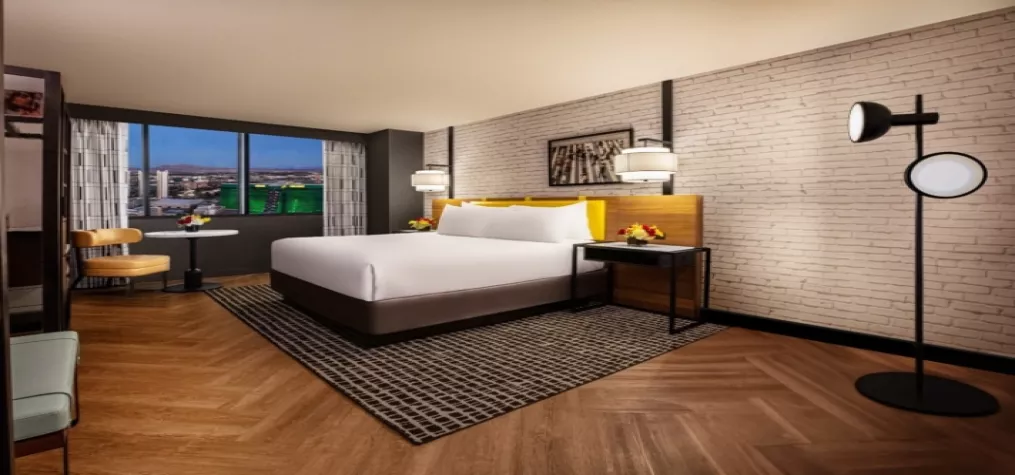Tech Giants: Social hour’s Adam Riggs on Elevating Human Connection and Engagement in the Virtual and Hybrid World

While the words “startup” and “epiphany” seem to go hand-in-hand nowadays, a pivotal moment of realization is not what inspired Adam Riggs to create Frameable and build out its suite of remote-first digital experiences, including its virtual and hybrid event platform, Social hour.
“Many founder stories start with a magical ‘aha!’ moment—a sudden spark of inspiration an aspiring entrepreneur scribbles on a coffee shop napkin,” he said. “I don’t have one of those.”
What Riggs does have is an incredibly varied career that has led him to reflect on learnings from his many prior roles, including positions in the fast-paced world of derivatives trading, the first president and CFO Shutterstock, a member of Secretary of State John Kerry’s staff and an investor in all kinds of companies.
During the past decade, every position and board seat Riggs held had one thing in common: lots of meetings.
“Over the years, I’ve come to believe that a lot is broken about how people typically collaborate,” he said. “The technology that makes it possible to ‘meet’ through conference calls and video chats on its own certainly does not help people make the most of their time.”
After his last formal role with the U.S. State Department, Riggs committed to creating better remote collaboration tools that put the humans who use them at the core, which eventually gave rise to Social hour.
We sat down with Riggs to get his take on what distinguishes Social hour from other platforms, the best ways to truly engage attendees and the evolution and future of the ever-changing virtual and hybrid event space.
Since the pandemic began, a plethora of virtual and hybrid event platforms have rushed to the market. What sets Social hour apart when it comes to helping clients produce standout trade shows, conferences and other events?
Our relentless, merciless focus on design, both graphic design and interaction design. It has to look beautiful, each feature has to work beautifully on its own and they also have to fit together in a way that is natural and effortless, easy to understand for the attendee and easy to set up and implement for the event planner.
Marketing can put eyes on your product, of course. But if the design falls short, if the user’s experience is frustrating, then companies that invest more in marketing than user experience will be pushed aside. This is happening now and will continue.
Specifically for trade shows and similar large-scale events, Social hour enables hosts and planners to create sponsored booths if they want to, fully brand and customize the event on several levels, list participants and user profiles for easy networking, let participants opt-in to exchange contact information and garner insights into the event with metrics and reports on attendance, popular table topics and engagement levels.
All these features are beautifully executed, but they are a means to an end: deliver the human connection. A virtual event needs to be more than 10 hours of video that attendees passively consume. It has to be elegant and at least partially interactive for everyone involved. Aside from breakout sessions, the benefit of in-person conferences is the ability to casually meet and network with industry colleagues in the lobby or grab a coffee while also meeting new, meaningful contacts before, during or after any programming.
No one goes to in-person events just for the content. They go for the human connection, and that is what has been lost. We’re focused on bringing it back through great design and a well-thought-out user experience.
What’s the secret to cracking the engagement code for virtual events, and how are you helping your clients do it?
There are several ways to help keep your audiences drawn in and engaged during virtual events. Event planners can set up and provide live chat tools, dedicated messaging channels, small group video sessions and open video conferencing rooms where in-person and virtual attendees can hang out and connect before and after the event. Post-event landing pages or dedicated forums that allow all attendees to connect and interact are good ideas to boost engagement.
When you are planning a virtual conference or trade show, consider how you can use technology to re-create the in-person experiences that attendees find the most valuable (i.e., meeting and engaging with other people). Be sure you enable virtual attendees to interact with speakers, network with industry vendors and engage with industry colleagues.
What are some of the biggest client pain points that Social hour is successfully addressing?
Social hour integrates with numerous conference content delivery platforms to provide a variety of attendee engagement opportunities. The user experience is compelling and straightforward. The platform’s fast, intuitive, customizable layout and breakout tables allow new networking and interaction sessions to be implemented on short notice and provide a very close feeling to an in-person experience.
One of the most important compliments we hear from people who have used other virtual event software as well as Social hour is that they love how easy it is to get up and running with Social hour. There is no need to work with a third-party tech vendor to plan, set up or run your event. From the finalized agreement through to the event day, we are available to help but at the same time, once you have run one or two events with us, it’s very easy to manage on your own.
Can you give us examples of some of your most successful and engaging virtual or hybrid events?
We recently partnered with TechChange, the Institute for Technology and Social Change, an online events and course provider for the social sector (government agencies, non-governmental organizations, academic institutions, etc.). The pandemic fueled an increase in virtual events, which accelerated demand for TechChange’s services. Over the past year, TechChange scaled up its virtual event product offering and has hosted several dozen large-scale events (multi-day or 1,000-plus people often with high-level production).
They run an annual 10,000-plus person event called RightsCon, the world’s largest tech and human rights conference. They conducted approximately 100 Social hour sessions across a five-day schedule during this year’s event and used Social hour for additional focused networking rooms. RightsCon’s leadership said in the final plenary session of the event that their use of Social hour was the top-of-list highlight of the entire conference.
For the recent Society for International Development’s Annual Conference, TechChange used Social hour to create something more like an expo hall with logos for different sponsoring organizations at the tables. When a presenter was speaking and doing a demo, the other people at their tables could talk with each other on video.
Do virtual and hybrid events have a future as the industry continues to move back to in-person?
Definitely. I think it’s a mistake to think we’ll go back to the way things were before. The truth is that the future of events is hybrid—that is, featuring a mix of in-person and virtual experiences to maximize the potential value and ease of access for attendees worldwide. Even if we could completely erase the larger concerns of COVID, many organizations have realized the benefits that come with running virtual and hybrid events in terms of cost savings, reach, increased sponsorships, etc. Further, attendees around the world have had an entirely new set of opportunities opened up for them—why would you want to throw away this potentially huge revenue and engagement source?
Don’t miss any event-related news: Sign up for our weekly e-newsletter HERE and engage with us on Twitter, Facebook, LinkedIn and Instagram!


Add new comment